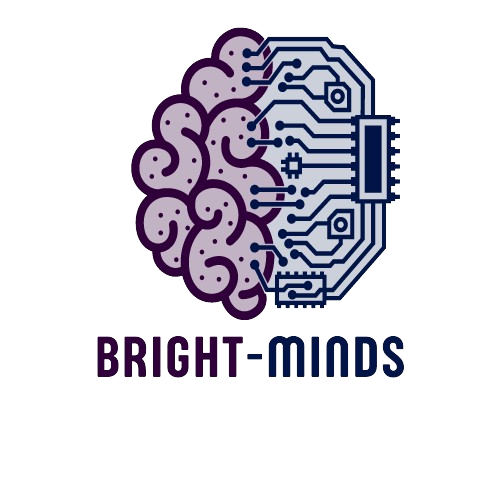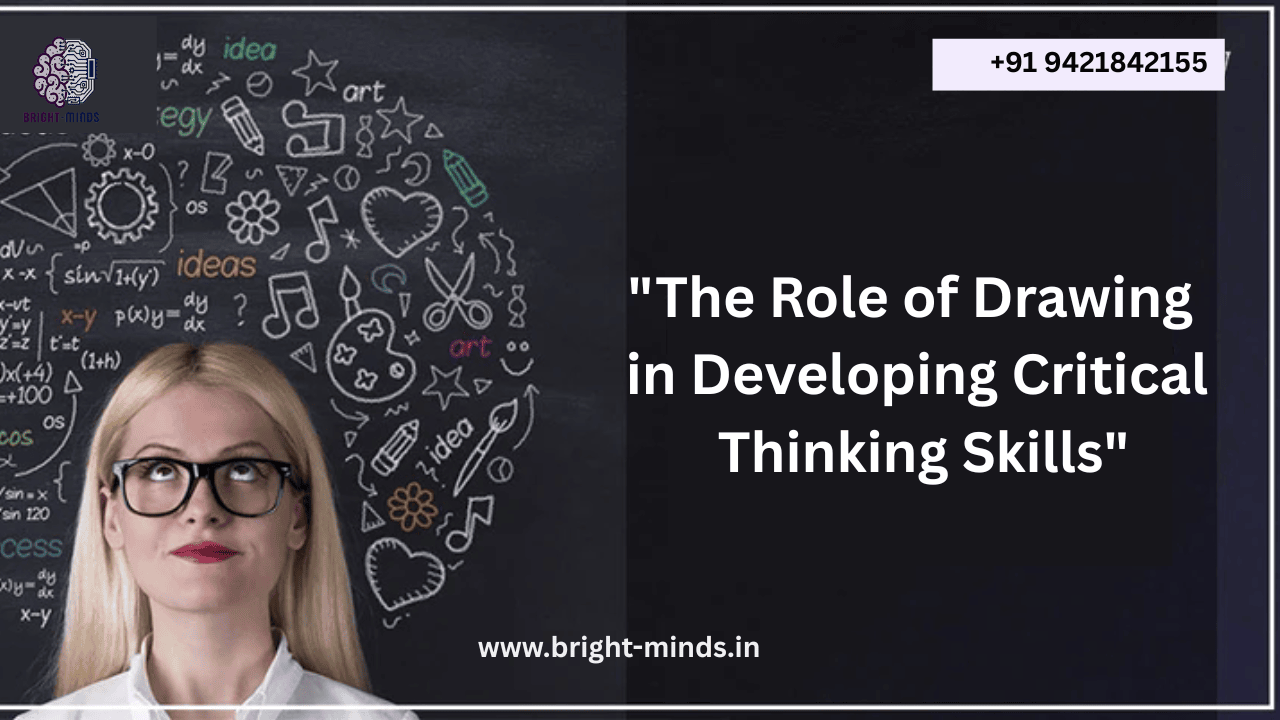In a world driven by technology, logic, and rapid decision-making, one timeless skill continues to stand out as a bridge between creativity and intellect—drawing. While many perceive drawing as a simple artistic activity or a childhood pastime, it is, in fact, one of the most powerful tools for enhancing the way we think. The connection between drawing and developing critical thinking skills runs deeper than most realize. Through lines, shapes, and visual exploration, drawing nurtures the mind’s ability to observe, analyze, interpret, and create—skills that form the very foundation of critical thinking.
Imagine this: a person observing a simple object like a coffee mug before sketching it. At first glance, it’s an everyday item. But to draw it, one must study its curves, shadows, and proportions. This act of visual analysis transforms passive seeing into active observation—a process that engages the brain’s analytical and creative centers simultaneously. This is where the role of drawing in developing critical thinking skills becomes evident. It teaches individuals to question appearances, break problems into components, and reconstruct them with logic and imagination.
Critical thinking is not limited to academics or professional environments—it is a life skill. It enables people to assess information objectively, make informed decisions, and solve complex problems. Drawing enhances this skill by training the brain to slow down, observe, and interpret the world with precision and empathy. Whether it’s a designer conceptualizing a product, an engineer visualizing a structure, or a student interpreting a concept, drawing strengthens cognitive flexibility and problem-solving capabilities.
Recent educational and psychological research supports this connection. Studies show that visual arts, particularly drawing, engage both hemispheres of the brain—the analytical left side and the creative right side—resulting in holistic thinking. This balanced engagement helps learners make sense of abstract concepts, form new ideas, and think critically about what they perceive. For instance, when students draw scientific diagrams or historical timelines, they internalize complex information visually, leading to deeper comprehension and memory retention.
But the benefits of drawing extend far beyond classrooms. In workplaces, drawing is increasingly recognized as a tool for innovation and communication. Professionals across industries—be it architects, marketers, entrepreneurs, or strategists—use sketches to visualize ideas, simplify data, and solve problems creatively. Visual thinking through drawing allows them to connect dots that words alone might miss. For example, during brainstorming sessions, sketching ideas helps teams analyze multiple solutions, spot flaws, and refine concepts before implementation. It’s this ability to think through drawing that fuels modern design thinking processes and fosters a culture of innovation.
Another fascinating aspect of drawing in developing critical thinking skills lies in its power to cultivate mindfulness. In a distracted digital era, drawing demands focus and patience. Each line requires attention, each stroke intention. As adults and children alike engage in drawing, they practice concentration and reflective thinking—two essential components of critical analysis. This mindfulness not only enhances creativity but also builds mental discipline, enabling better decision-making and emotional intelligence.
Parents and educators often underestimate how deeply drawing influences cognitive development in children. When a child sketches a scene from memory or imagination, they are engaging multiple thought processes simultaneously: observation, interpretation, synthesis, and expression. For example, when asked to draw a story they’ve just read, children must recall details, infer emotions, and decide how best to represent them visually. This process strengthens their analytical reasoning and encourages them to think about relationships between objects, actions, and ideas—key aspects of critical thinking.
Adults, too, can benefit immensely from integrating drawing into their routines. In fact, professionals in leadership and management roles are increasingly turning to visual journaling and mind-mapping techniques to enhance problem-solving. When faced with complex data or strategic planning, sketching helps break abstract thoughts into manageable visual components. A simple diagram or flowchart can reveal patterns and insights that might otherwise remain hidden in text-heavy analysis. By translating abstract problems into visual form, drawing becomes a cognitive tool that sharpens perspective and clarity.
Interestingly, neuroscience also backs the relationship between drawing and cognitive growth. Engaging in visual art activates the prefrontal cortex—the part of the brain responsible for reasoning, planning, and decision-making. This means that every sketch, no matter how simple, is a mini-workout for your brain. Over time, consistent drawing practice improves neural connectivity, helping individuals approach challenges with analytical depth and creative agility.
In corporate environments, where critical thinking is among the most sought-after soft skills, drawing exercises have become part of modern training methods. Workshops that combine visual storytelling, design sketches, and brainstorming with illustration are shown to enhance group problem-solving efficiency. Teams that visualize ideas together communicate more effectively and find innovative solutions faster than those relying solely on verbal discussions. Drawing essentially becomes a universal language that transcends jargon and encourages collaborative reasoning.
Drawing also fosters emotional intelligence, another pillar of critical thinking. When people draw, they not only express external ideas but also reflect on internal emotions. This introspective process helps them understand perspectives, empathize with others, and evaluate situations with balance—skills that are invaluable in both personal growth and leadership development. The ability to see from multiple angles, interpret nuances, and synthesize perspectives mirrors the essence of critical thinking.
From an educational standpoint, integrating drawing into learning modules has shown measurable improvements in student engagement and analytical ability. For instance, students asked to draw mind maps or concept diagrams demonstrate higher comprehension and retention rates compared to those using text-only notes. Visual representation encourages deeper processing of information and helps learners connect abstract theories with real-world examples. It transforms passive learning into active exploration—a shift essential for developing true critical thinking.
In the broader context of modern society, where automation and artificial intelligence are taking over routine tasks, human skills like critical thinking, creativity, and emotional insight are more valuable than ever. Drawing nurtures all three. It trains individuals to question, interpret, and innovate. This makes it a future-ready skill, not just for artists but for everyone—from engineers and educators to entrepreneurs and analysts.
So, how can you integrate drawing into your routine to strengthen critical thinking? Start small. You don’t need to be an artist or possess special tools. Begin by sketching what you observe daily—objects, places, or even abstract thoughts. Try visual note-taking during meetings or brainstorming sessions. Turn ideas into simple diagrams or doodles. The goal isn’t perfection; it’s perspective. Over time, you’ll notice how drawing slows down your thought process, enhances attention to detail, and helps you evaluate problems from new angles.
Ultimately, drawing is not just an art form—it’s a thinking tool. It connects observation to interpretation, creativity to logic, and imagination to understanding. It teaches us to see before we judge, to visualize before we decide, and to create before we conclude. The role of drawing in developing critical thinking skills is, therefore, not just educational but transformative. It helps individuals at every stage of life become more thoughtful, innovative, and perceptive thinkers.
If you’re inspired to explore how drawing can sharpen your mind and improve your problem-solving abilities, explore our specially curated online courses and resources. Learn to harness the power of visual thinking and unlock the creative potential within you. It’s never too late to draw your way toward sharper, smarter, and more critical thinking.
You may be interested in this:
The World of Colors: Fun Facts About Colors and How They Work

